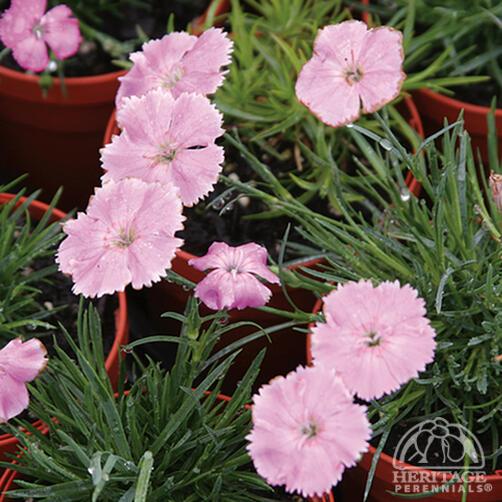Dianthus pavonius
Peacock-eye Pinks |
USDA Zone: 4-9 |
Plant number: 1.180.320
A compact species of Pinks, especially useful in the rock garden, in an alpine trough garden or gravel scree. This forms a low carpet or cushion of blue-green leaves, bearing good-sized starry single flowers in late spring. Blooms are in various shades of pink, with a sweet clove fragrance. Drought-tolerant once established. Clip lightly after blooming. Evergreen, so do not prune in fall or spring. Not always easy to divide, but this can be attempted in early spring or fall. Flowers may be attractive to butterflies. Unlike most Dianthus this species prefers lime-free neutral to acidic soils.
Further details for
Dianthus pavonius
Optimal Growing Conditions
Sun Exposure Full Sun
Soil Type Normal or Sandy
Soil pH Neutral or Acid
Soil Moisture Dry
Care Level Easy
Appearance and Characteristics
Flower Colour Deep Pink
Blooming Time Early Summer Late Spring
Foliage Color Grey Green
Plant Uses & Characteristics Alpine & Rock Attracts Butterflies Containers Deer Resistant Drought Tolerant Edging Evergreen Fragrant
Flower Head Size Small
Height 5-10 cm 2-4 inches
Spread 15-30 cm 6-12 inches
Foot Traffic Light
Growth Rate Slow
Disclaimer: This information is presented for reference only. This plant is not currently part of our Heritage Perennials lineup.
|






